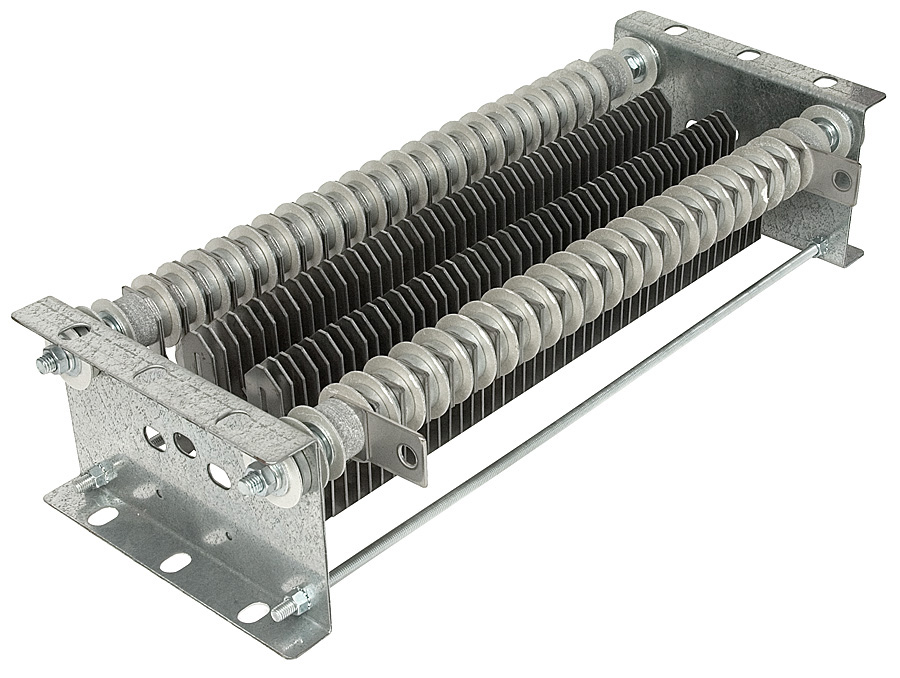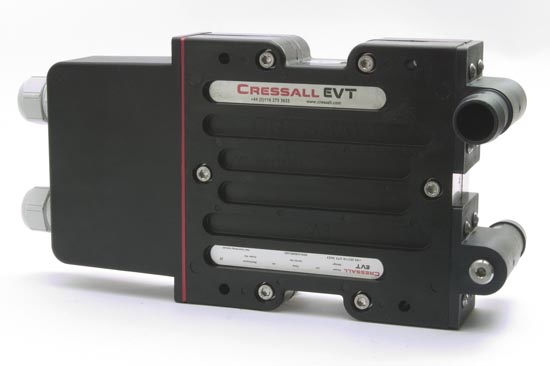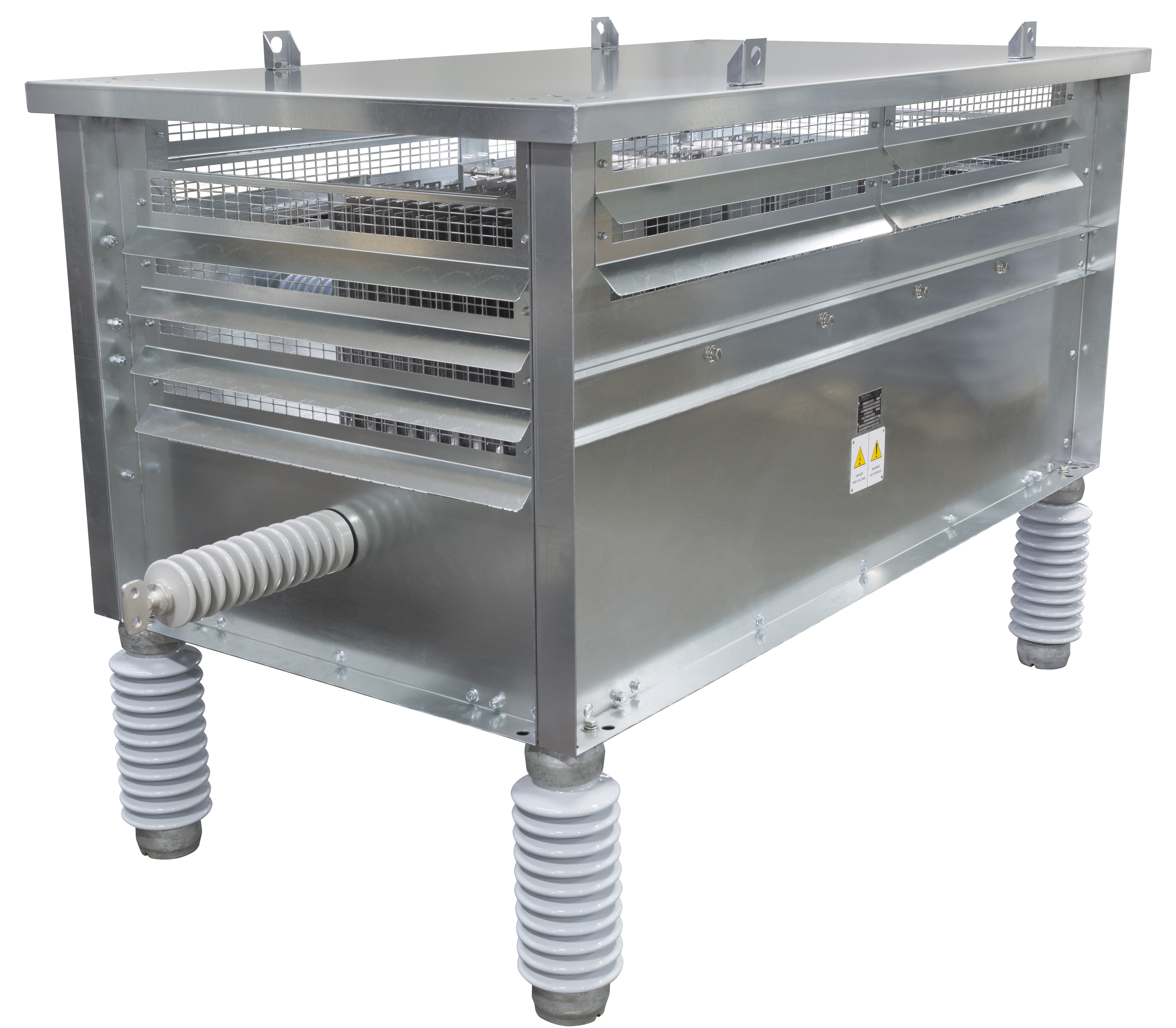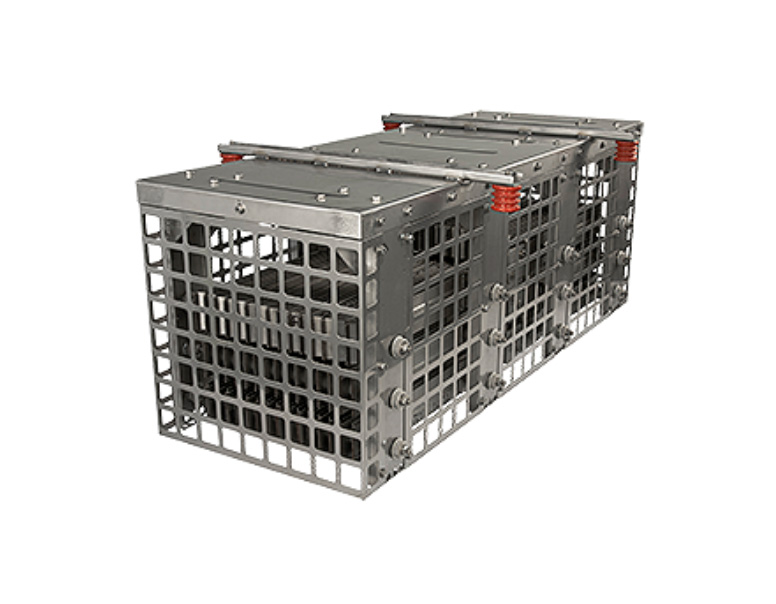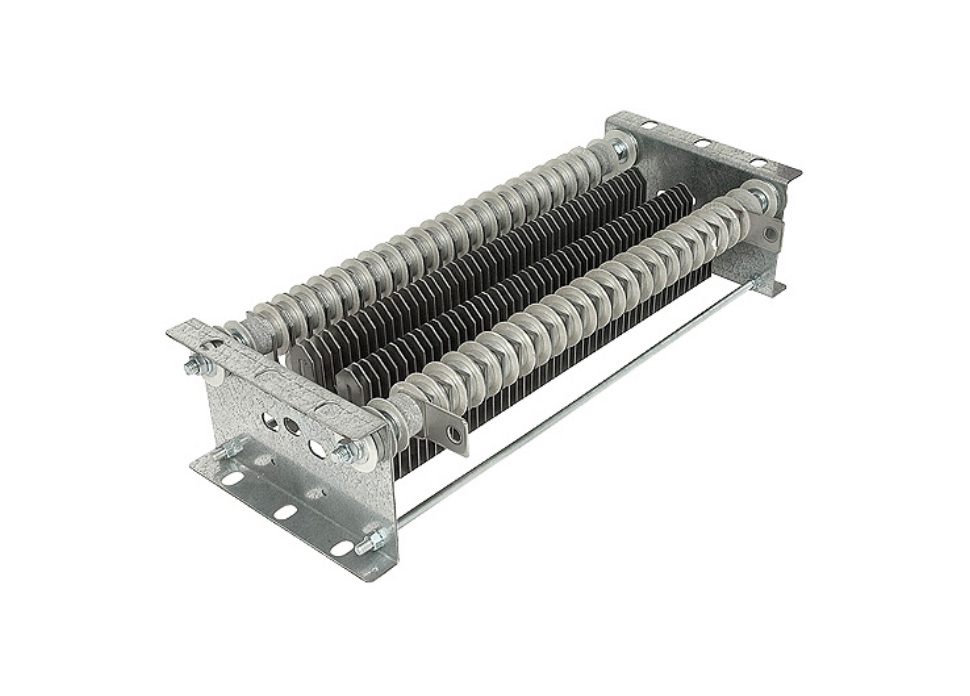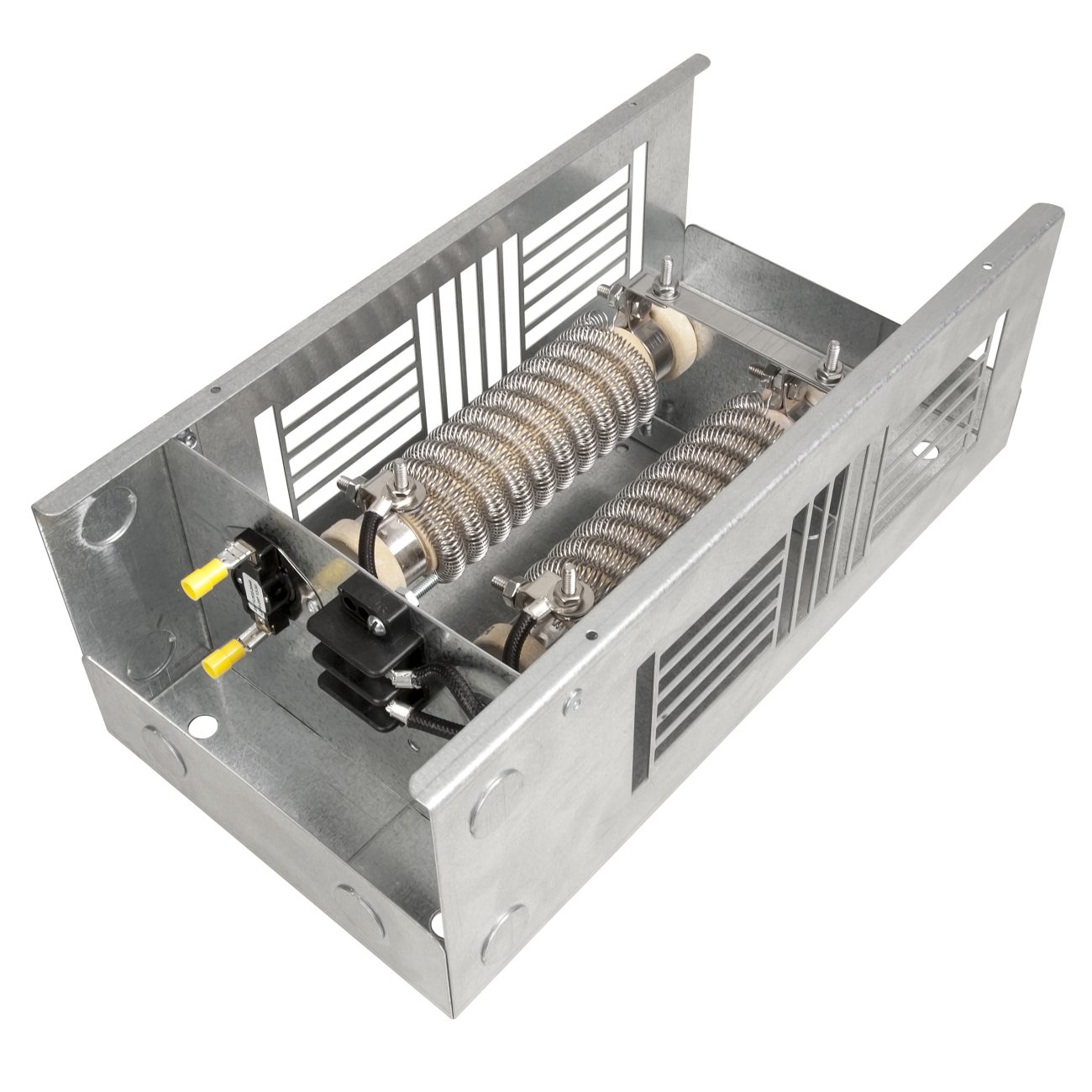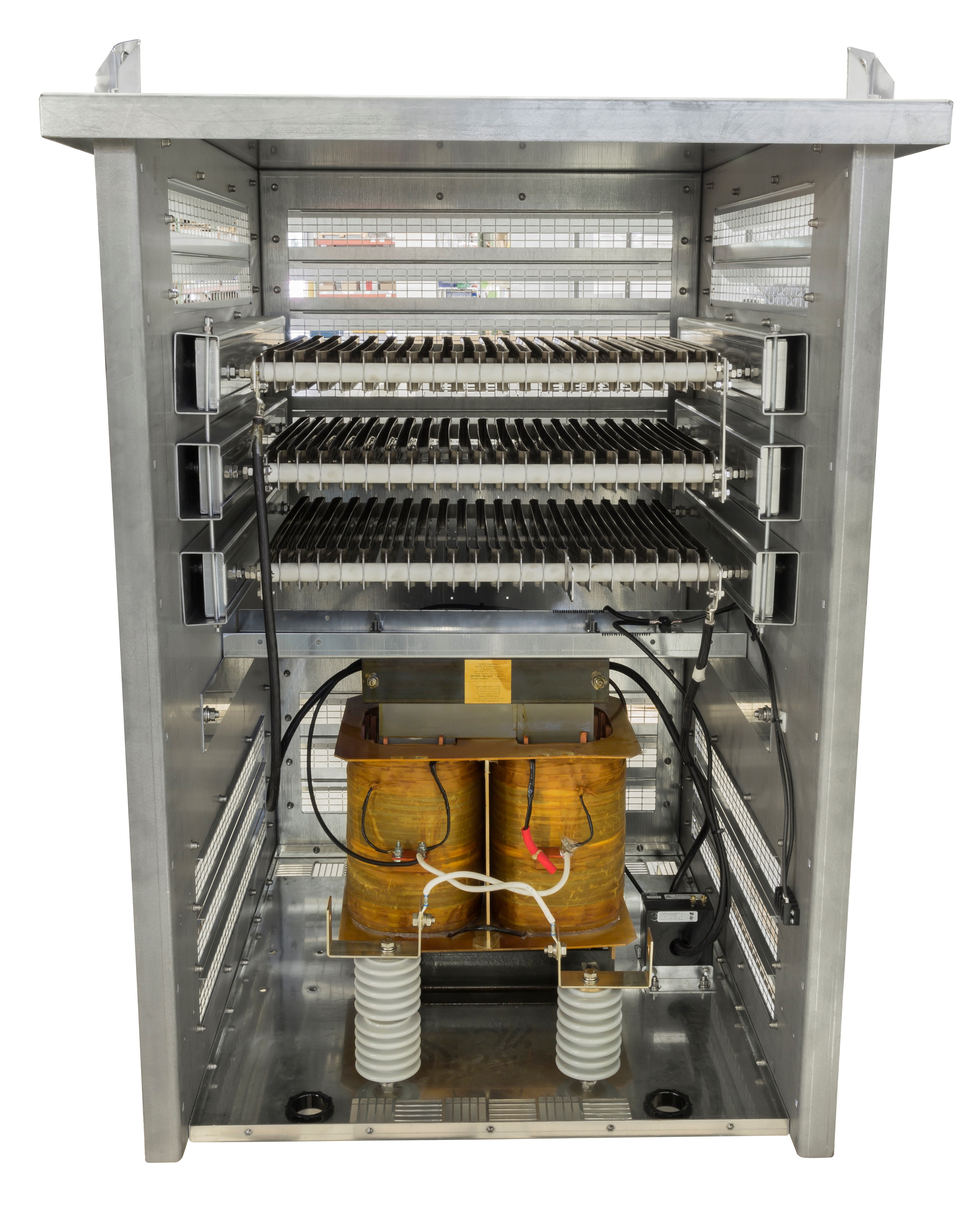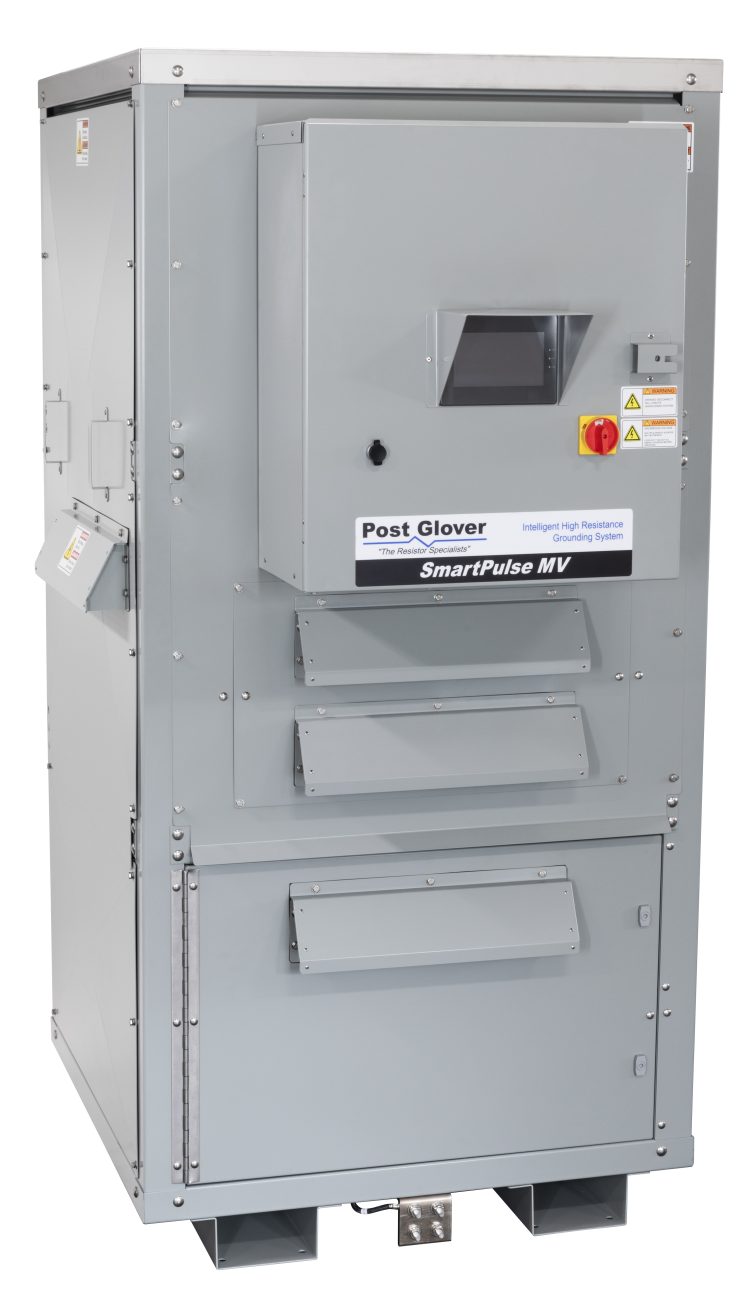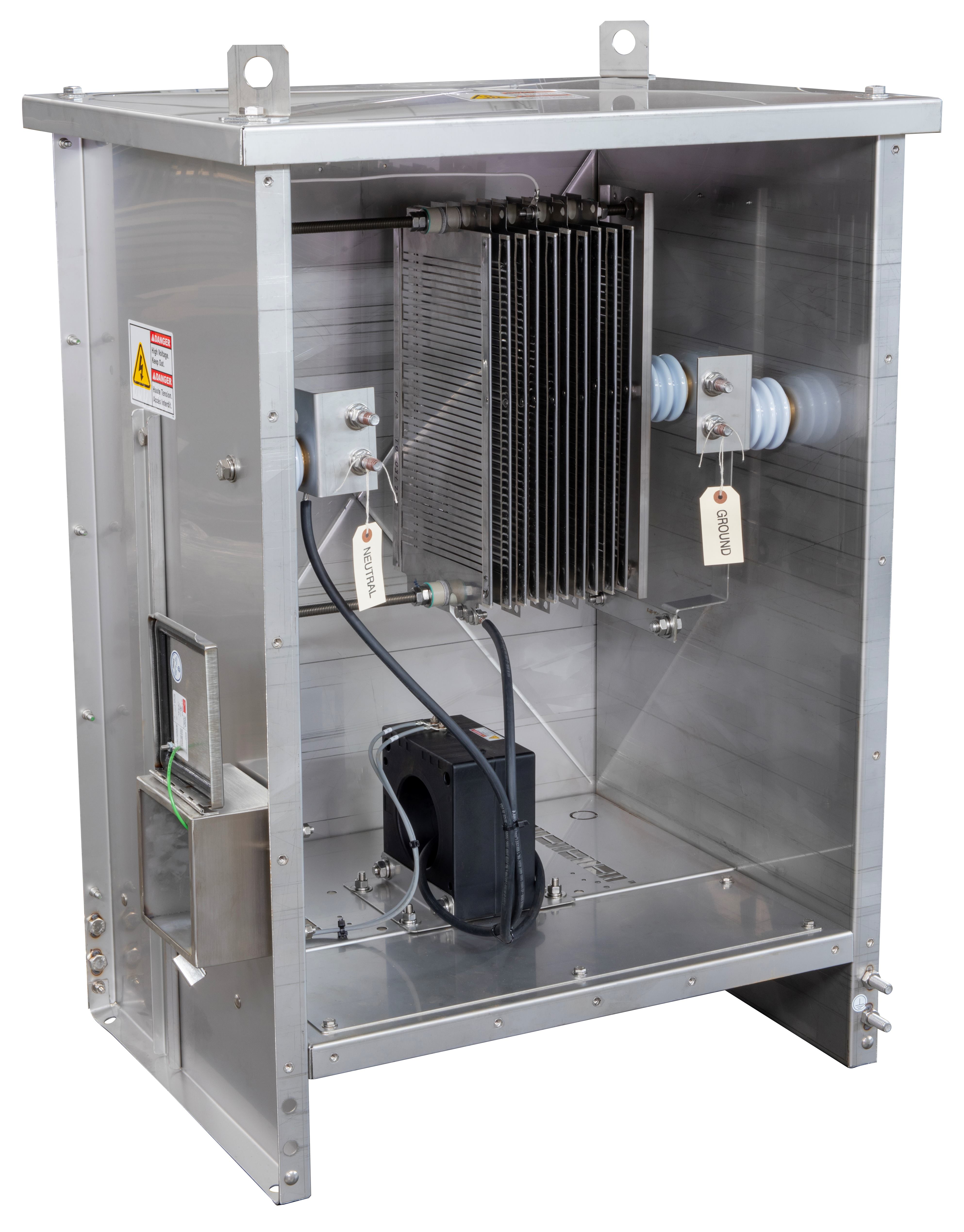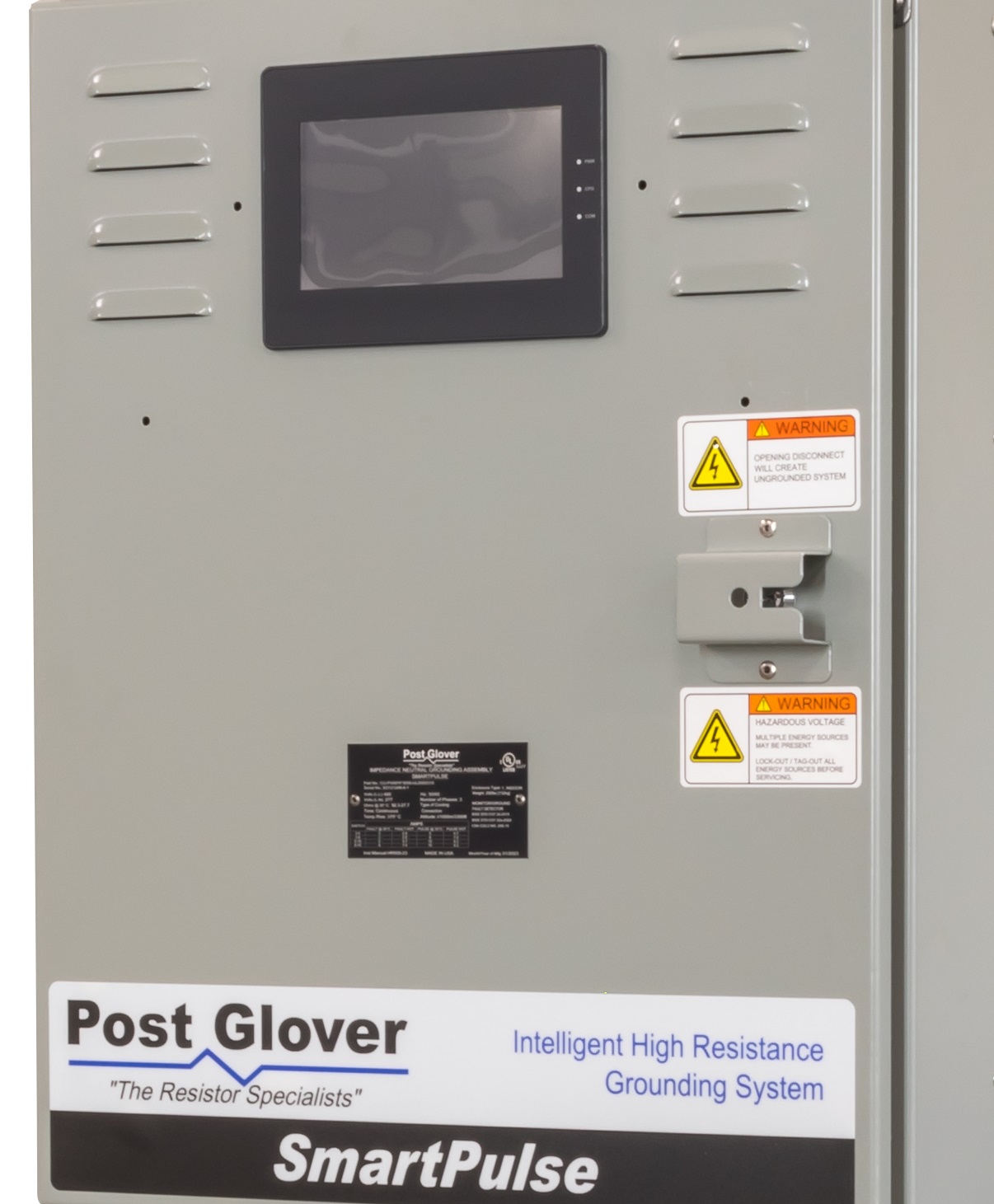Resistor Elements
Low resistance grounding resistor systems protect power transformers and generators from damaging fault currents. Low resistance grounding of the neutral limits the ground fault current to a moderate level (typically 50 amps or more) in order to operate protective fault clearing relays. These devices are then able to quickly clear the fault, usually within a few seconds.
The importance of this fast response time is that it:
- Limits damage to equipment
- Prevents additional faults from occurring
- Provides safety for personnel
- Localizes the fault
The limited fault current and fast response time also prevent over-heating and mechanical stress on conductors. Please note that, like the solidly grounded neutral system, the circuit must be shut down after the first ground fault. Low resistance grounding resistors are typically rated 400 amps for 10 seconds, and are commonly found on medium and high voltage systems.
Features & Capabilities:
- Neutral Grounding Resistors (NGRs) protect power transformers and generators from damaging fault currents
- Available for systems rated 240v to 72kv line-line (CSA approved up to 7200v)
- Stainless steel resistors designed and chosen for optimal efficiency
- Current ratings up to 5000 amps
- All NGRs designed and tested per IEEE C57.32
- Certified test reports and installation/maintenance instructions accompany each NGR
- Standard ventilated enclosures are painted or mill-galvanized, with stainless steel, hot-dipped galvanized, and aluminum as options
- PGR will gladly package CTs, PTs, disconnect switches, grounding transformers, and heaters in the NGR cubicle
- Seismic zone 4 certifications and type tests also available
- Technical papers on the theories and practice of Resistance Grounding readily available

